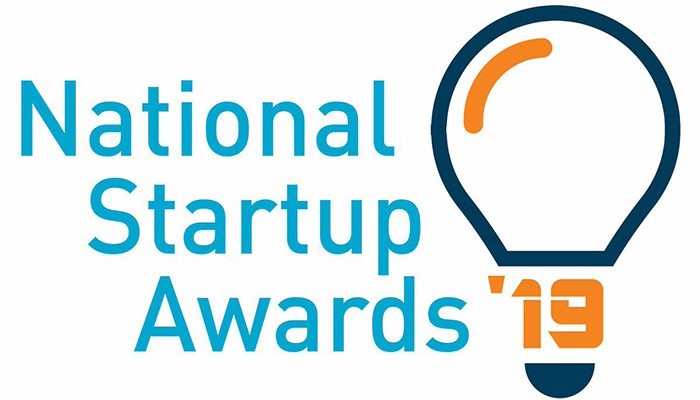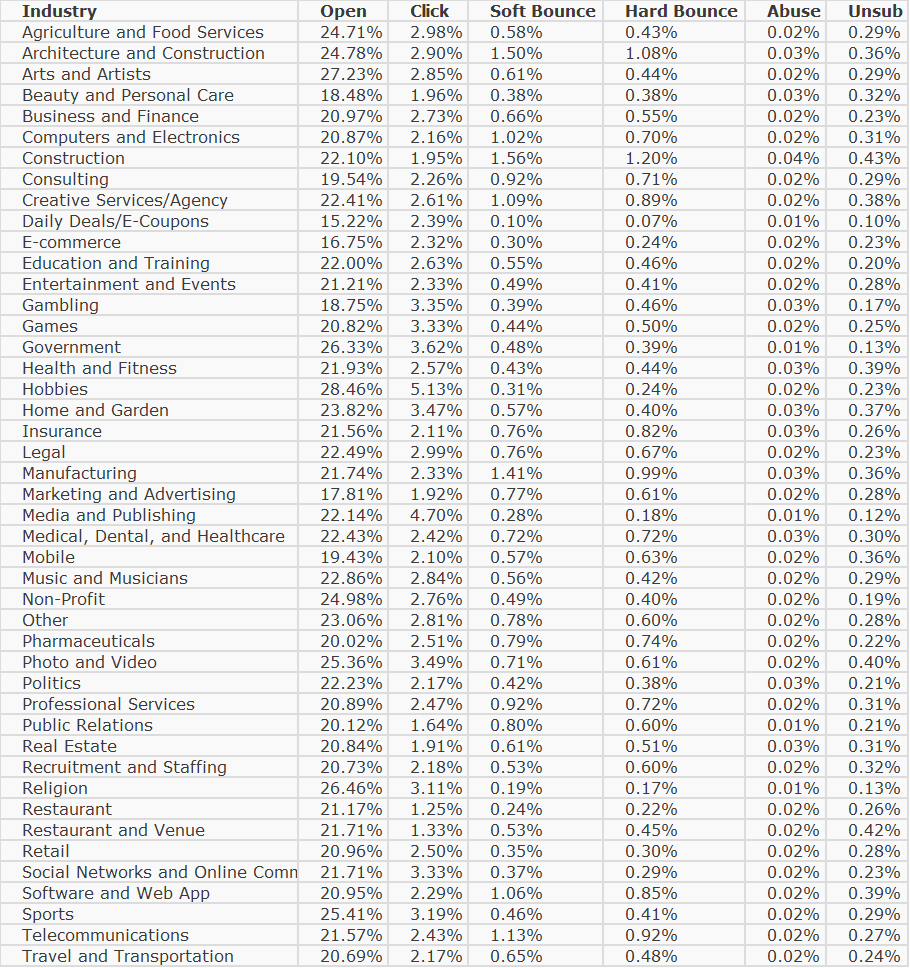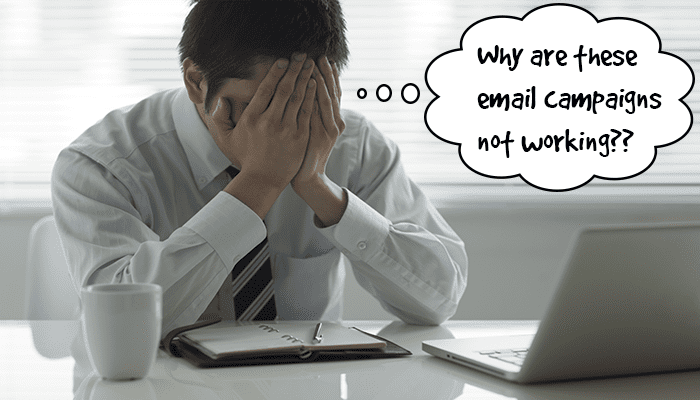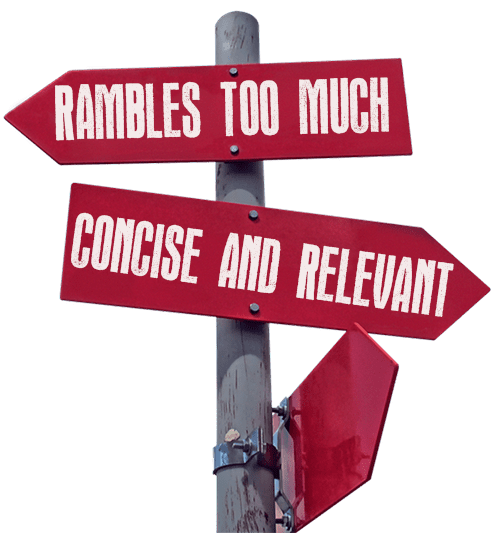
Gold in the Emerge-Tech Category!
24/08/2021B2B Emails Are Important
2016 saw a shift in the importance of email marketing and its impact on revenue. According to Salesforce’s State of Marketing report last year, 49% of marketers claimed that email was directly linked to their business’s primary revenue source – an increase from the 20% of marketers who said the same in 2015. This report by MailChimp also highlights some interesting statistics on the open, click-through, and bounce rates of emails by industry:

Despite research suggesting the importance of email in business, there also seems to be a wealth of information surrounding the common mistakes that B2B email marketing entangles itself in. Time and time again, we see content that makes a point in exemplifying the pitfalls of email and why it can cause a headache for so many companies. Yet few offer actionable insights to help prevent these headaches from persisting.
From our own research, we identified some of the reasons why we feel that B2B emails don’t always yield the best results, as well as some possible solutions for improvement:

1. Poor Subject Line
This may seem like the most obvious reason in the world (honestly, we’re not trying to insult anyone’s intelligence!), but this issue seems to crop up time and time again. B2B Marketing asserts that email open rates in the B2B realm are notoriously low, and argues that poor subject lines are partly responsible. An article by Capterra also documents some ‘horror story’-esque examples of terrible subject lines and how they are to be avoided.
The nature of the email will certainly have an impact on the type of intro, i.e. whether it’s a cold email, follow-up correspondence, etc. But deciding on your attention-grabbing title isn’t always straightforward. The window of opportunity for email engagement is becoming shorter and shorter; it has been argued that people have an average attention span of 8 seconds, therefore we need to consider certain factors when it comes to the subject line:
Keep it concise and to the point
No one likes unnecessary reading, and if your reader has too much work to do just by looking at the title, then good luck in asking them to read the rest! Keep the message relevant too; that might seem obvious, but sometimes we can become wrapped up in what we think the person wants to hear, that we lose sight of the actual meaning. Remind yourself of how the reader can benefit from your email, and base the relevancy of your subject line on this insight. And always make sure that what you’ve mentioned in your title is reflected in the body of the email too – no one likes being misled!
Don’t oversell it too much
Even if you are emailing the most seasoned of Salespeople, using a subject line that’s too promotional sounding can come across as awkward and desperate. Hubspot created a list of email subject lines that are overused, annoying, and presumptuous, and from a quick glance, it’s easy to spot the cringeworthy, and down-right ‘salesy’ ones: ‘Complimentary [product] demo’, ‘Coming in ice-cold, but hoping to help!’, etc.

2. No Clear Calls-To-Action…. Or Too Many!
According to John Bonini of Litmus: ‘When it comes to email, there are no bigger targets than your calls-to-action.’ Whether you’re sending out a large campaign or just one email, the call-to-action remains crucial in both cases. If you’re lacking a clear call-to-action in your message, you can’t really expect to have a high click-through rate…or a successful response at all for that matter. It doesn’t take a person very long to realise that what they’re reading is useless and a waste of their time – in which case, it’s likely that your email may end up in the spam folder.
Similarly, having too many calls to action can lead to an equally bad problem. Asking too much of a reader can deter or frustrate them if they aren’t sure exactly what’s being asked of them. An example could be an email that invites the reader to a product demo, while also asking them to avail of a free trial, and perhaps even respond to the email with feedback. According to Ellie Mirman, VP of Marketing at Toast, emails with just a single call-to-action can increase clicks by over 300%, and sales by over 1,000%.
When deciding on the right call-to-action to implement, consider the following:
What action do you want them to carry out?
Think about your over-arching message: what is the purpose of your email? Are you hoping to increase the number of trial signups to your platform? Are you interested in offering product demos to potential customers?
What is most likely to yield the best ROI?
How effective will your call-to-action be in terms of ROI? It could be that trial signups are a short-term success, but product demos are more beneficial in helping users to understand the product more easily, and thus making them more likely to convert.
How complex is the action that you’re asking the reader to carry out?
Whichever call-to-action you choose for your email, make sure that it’s quick and simple to complete. Asking too much of your reader may drive them away – a registration form with several fields to complete may deter them if they are short on time.

3. It’s All About You!
One of the greatest downfalls when sending an email (particularly one involving promotional content), is the lack of effort in trying to connect with the reader. Infusionsoft’s Vice President of Demand Marketing, Doug Sechrist, states: ‘Of course, your ultimate goal is to promote and sell your product. But to see better results from your email marketing program, focus on engaging your customers.’
Companies often become over-excited by the promotion they’re offering and shape the entire email content around that message. It should not be assumed, however, that the sender doesn’t understand its customers’ needs; rather, they have a lot of faith in their product or service (which is great!) and want to tell their readers all about it. The only problem is, the reader may not have heard about your product or service or doesn’t even know who you are!
They say, that to land in a person’s inbox is a privilege; therefore, a key question to ask yourself is: ‘Is my email content worthy of my reader’s time?’ Before you hit send, ask yourself whether you feel you have truly engaged with them – one way to find out is by checking whether your email includes:
Personalisation
Introducing your email with: ‘Dear Sir or Madam, or even ‘Hi’, will not offer much in return. Any email marketing tool we’ve ever used has always included personalisation tags to address someone: first name, company name, job title, etc. Including the reader’s first name is fundamental when it comes to personalising an email; not doing this clearly indicates that you don’t know who they are, nor have you bothered to find out. It doesn’t take much effort to include a personalisation tag in your email, but in cases where you don’t know the name of the person you’re contacting, avail of the opportunity to find out, especially if it’s a promotional based email: ‘I was hoping to speak with the person responsible for X, could you point me in the right direction?’
A Benefit
Another way to ensure that your email content is engaging and keeping the reader at the center of the message is to offer them a clear benefit. Why should they avail of your offer? What’s in it for them? If we consider that the average person has an attention span of 8 seconds and that an email reaching an inbox is a ‘privilege’, then we need to be certain that reading our message will be time well spent by the reader!
You probably want to tell them all about how fantastic your product or service is, right? Of course, why wouldn’t you? Just be mindful that this might not translate well if the reader doesn’t feel that your offering can benefit them in some way. You should never assume anything; always be clear on how this is a great opportunity for them. Think about your value proposition: how can your product or service solve their problem?
A Digital Marketing agency, for example, would more likely achieve success by offering the benefit of their service, rather than just information about it. Merely telling the reader in an email that they offer SEO and Email Marketing services lacks a compelling reason for ANYONE to want to find out more information. However, by focusing on the end result, this creates a more enticing appeal, e.g. ‘Improve your search rankings on Google’, or ‘Create compelling email content that lands in the inboxes of the right people at the right time.’
We Hope This Helps!
Hopefully, these tips have helped shed some insight if you feel that your B2B emails are delivering poor results. The next time you’re preparing to send an email, just double check that you have a concise and relevant subject line, you are offering a clear and compelling call to action, and you’ve made sure to engage the prospect and keep them at the heart of your message.










